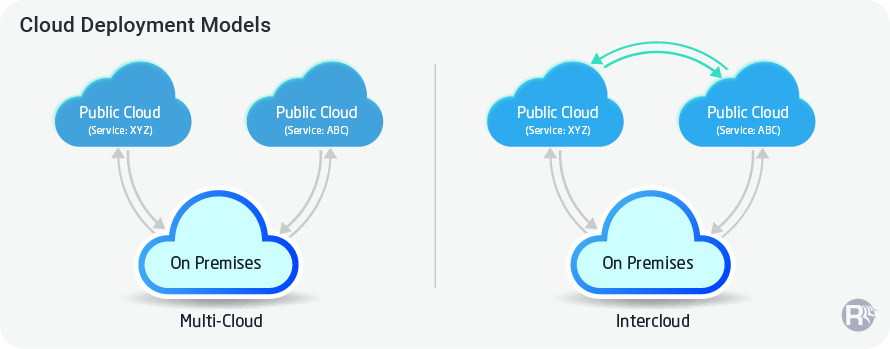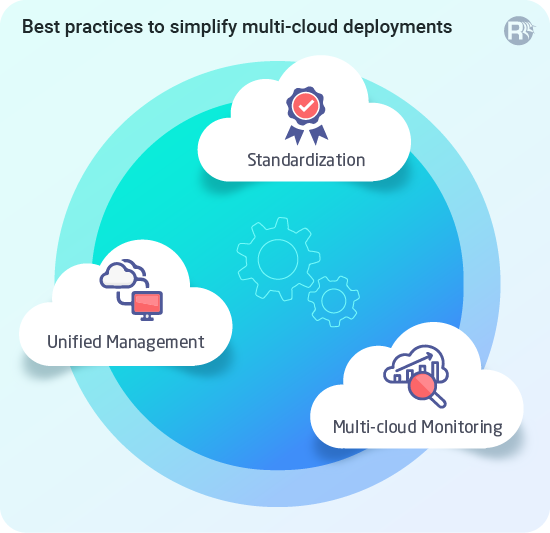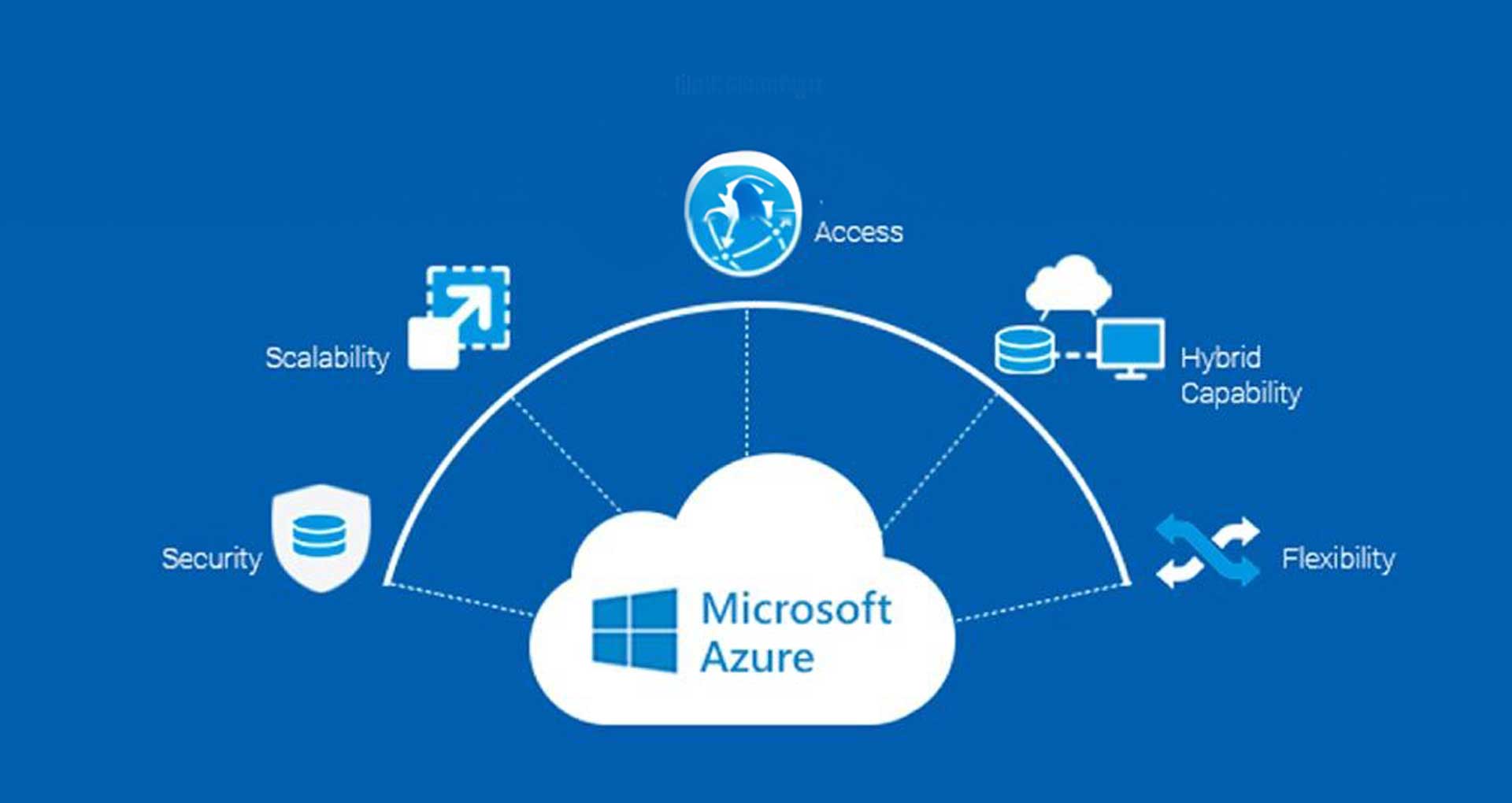Organizations today are looking to modernize their traditional workloads and operations while increasingly adopting cloud technology for scalability & performance. Initial environments failed to keep up with the growing workloads and functionalities.
Today, enterprises are moving to multi-cloud operating environments to leverage best-of-breed technology configured in optimized ways. It offers the companies the freedom to choose a platform of choice for each workload or end-user preference. It provides enterprises to leverage vendor lock-in, support business objectives of continuity and disaster recovery & performance optimization. All of this while creating agility across the organization. It offers a mix of public, private, or hybrid cloud solutions- all into one and does not necessarily use different types of environments.
Whereas developing an intercloud requires integration between two services, with each one operating on different infrastructure. It becomes a must when you wish to integrate data and analytics workflow across additional services/clouds.
Now the question you might ask would be – why and how a multi-cloud environment optimal for your business? If you’re a CTO/CIO looking to evaluate the existing infrastructure costs and planning to maximize application availability for the users. In that case, this article is for you.
As part of this write-up, we’ll cover the best practices, advantages, disadvantages, and necessary features of a multi-cloud environment to help you make the right choice.
Why Organizations choose Multi-cloud and Intercloud Strategy?
Multicloud: Where a service or product runs on more than one CSP infrastructure, including on-premises.
Intercloud: Data is integrated or transferred between service providers. Each service on a different infrastructure as part of logical application deployment. It is vital for use cases when organizations need to integrate data & analytics workflow across various services/clouds.

Why Multi cloud Strategy is the Future of Enterprise?
Businesses are likely to choose more than one public cloud provider to meet their various needs. Enterprise architecture and business leaders must identify the right strategy that best drives their business needs.
Here are few reasons to consider a multi-cloud strategy and deployment.
Higher ROI
Each cloud consists of a diverse range of features, functionalities, price models/policies and more. The rapid changes in the dynamic enterprise IT landscape make it challenging to predict the right fit for your apps and business needs. The multi-cloud model approach provides businesses various options to choose the service provider to fit their business use case, rather than depending on a single one. Deploying applications on multiple clouds provides agility, reliability, flexibility and better total cost of ownership (TCO) — to maximize ROI.
Enhanced Security
The primary concern that deters industry laggards from cloud adoption is losing control over mission-critical apps and data. The promising solution is the private environment installed on-site that empowers businesses with granular control, transparency and complete visibility into IT resources. A multi-cloud environment allows them to maintain a hybrid approach that enables amalgamation of security and cost savings simultaneously. For instance, the most security-focused operations are kept in the private cloud while running consistent business data and apps in cost-effective public cloud networks.
High Speed and Minimal Latency
Access to data and applications stored at a greater distance across the network takes a longer time. Minor delays occur when data traffic travels across several cloud nodes before reaching end users. Latency is an inherent limitation in cloud computing delivered from servers installed at different locations. The multi-cloud infrastructure can choose the data center closest to end-users to send requested data with minimum network hops.
Resilience
Business resiliency is the next key driver of multi-cloud adoption for IT organizations. Not putting all your eggs in one basket can enable an enterprise’s resilience strategy. For instance, consider the case where a vendor has an infrastructure meltdown or an attack. The user can instantly switch to another service provider or back up or a private cloud. Instead of waiting for a vendor to resolve technical issues, organizations can re-locate their workloads to a secondary cloud and continue business as usual — without interrupting service to customers.
How to Build a Multi-cloud Management Strategy?
Developing a sound strategy requires an understanding of each style of deployment’s technology implications and associated challenges.
Here are a few best practices to help you leverage the benefits of cloud services to simplify multi-cloud deployments.
- Standardization – It is an essential aspect of cloud implementation. Use standard protocols and format for storage, networking and computing.
- Unified Management – Adopt tools that can visualize and manage multiple clouds as a single interface.
- Multicloud Monitoring – Use independent tools to help ensure consistent monitoring across multi-cloud environments.
Effective data integration becomes vital when data is split between multiple cloud environments. The majority of the enterprises leveraging cloud will be living in a hybrid or multi-cloud deployment world in the near future. So, it is necessary to unlearn existing practices for success in multi-cloud and hybrid data integration.

Pros and Cons of Multi-cloud Strategy
It offers many benefits such as agility, scalability, redundancy and cost-effectiveness. With its increasing popularity, decision-makers must know about the advantages and disadvantages of adopting a multi-cloud strategy.
| Pros | Cons |
| Lock-in risk reduction-Minimizes dependency on a single vendor | Managing multiple providers increases operational complexity |
| Take advantage of the latest and best services that suit your business needs | Monitoring is complex in the cloud-native world |
| Business Continuity and Disaster Recovery | Network latency issues and bandwidth consumption |
| Workload optimization | Intercloud integration costs |
| Agility in addressing new business needs. Time-to-market reduction. | Needs Management Overhead |
It’s an undeniable fact that the application of multi-cloud structure comes with its own set of challenges. It is not easy to combine the services of various vendors under one roof. However, it is vital for technology business leaders to prepare for an intercloud and multi-cloud world. Rishabh Software offers custom cloud development services to help organizations with solutions. We can help you design your business strategy and processes to implement best practices for multi-cloud management.











 30 Min
30 Min


